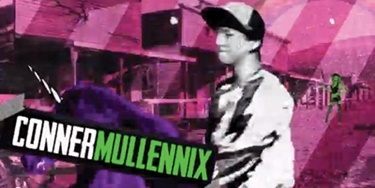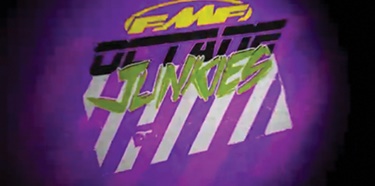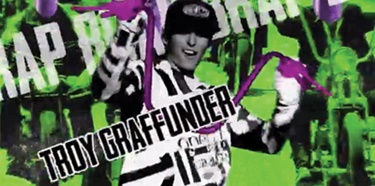Brands have historically focused on getting a visible presence at a sports venue, whether stadium naming rights or perimeter advertising on the sports field. The advent of broadcast allowed brands to increase audience reach, but this is limited to sports events that can drive large audiences to cover the TV broadcast costs. Today, sports venues use the low cost of video production to extend their events into digital media, whether building mobile apps or live Web streaming through channels like YouTube or uStream. This has benefited all types of sports events, whether following an international soccer team, giving a global voice to niche sports or making that Little League game accessible to family members a continent away.
While this change has benefited the consumer, it has made it much harder for brands to reach their audience. Brands used to have the certainty that buying a print or TV spot around a Monday night sports event would give them sufficient reach for nearly any campaign target. However, audience fragmentation across multiple device platforms and viewing times has meant that an individual sporting event (with the possible exception of the Super Bowl) no longer gives broad reach.
■ Digital as a solution
Extending sports sponsorship to digital is one solution to give brands a more direct relationship to an event. For example, Quicken Loans decided to become a team sponsor in NASCAR in 2012 to test the effectiveness of sponsorship marketing. The company quickly found the brand association justified, doubling down on its investment in the sport and now pulling all its digital content assets (videos, games and prize draws) to a dedicated destination site, Quicken Loans Racing. “We were not sure what to expect with the 2012 season being our first in the sport,” said Jay Farner, Quicken Loans president and chief marketing officer, speaking at a news conference announcing the company’s increased commitment. “What we quickly found was that NASCAR fans are tremendously passionate and loyal to the brands that help drive their sport. It was their commitment to our company that ultimately allowed us to significantly increase our involvement with the sport.”
 |
Action sports brands have been first movers in digital sponsorship. Part of the reason for this is their audiences tend to spend more time on YouTube sharing and watching video channels, but also since many of the action sports are often too niche or numerous to justify broadcast coverage. For example, surfing championships
(which are rarely covered on TV and typically have relatively small in-venue audiences) are regularlystreamed live over the Internet, and brands like Billabong or O’Neill wrap their brand around the events. Brands at these sports events typically combine in-venue sponsorship (e.g., providing energy drinks or T-shirts)
 |
FMF Apparel used an online video featuring motocross athletes to drive marketing of its Octane Junkies line.
|
alongside the digital extension, thereby engaging fans and getting mass reach.
In conjunction with event-based digital sponsorship, many brands are now creating branded content experiences for their sponsored athletes or brand ambassadors. For example, in May, FMF Apparel created a video of its motocross brand ambassadors, Conner Mullennix and Troy Graffunder, which showed them wearing a new Octane Junkies T-shirt. The video was viewable on a Facebook app, and FMF drove its audience to watch the event with links to buy the product at the company’s e-commerce store.
■ Adding digital to the RFP
As digital sponsorship starts to become more prevalent, sports properties need to start thinking about adding digital as a separate line-item on their RFPs to brand sponsors. Currently, sponsorship RFP responses by sports properties are focused on in-venue benefits. For example, they include commitments around perimeter advertising placement, positioning of brand booths in-venue, guarantees on number of attendees, and their profile from previous events. Some digital elements are included, but they play mostly a minor role (e.g., inclusion of a sponsor’s logo on event print and digital marketing), are limited in scope (e.g., adding a brand campaign from the sponsor on the event home page) or are included as value-add (e.g., including the sponsor’s logo in an event video). Consequently, the value of digital is not realized.
The benefits of digital
■ Brand research: Traditional sponsorship suffers from a lack of measurable activation and brand lift. The advantage of digital is that these issues can be addressed by a combination of user engagement metrics and brand research. “Demonstrating brand lift from events using tools like aided/unaided brand recall and doing A/B testing gives brands measurable ROI from their sponsorship investment and helps justify increased sponsorship commitments for subsequent events,” said Ben Steinberg, CTO at fan-tv, a digital sponsorship company that works with event properties. A/B testing is a methodology in advertising of using randomized experiments with two variables, A and B, which are the Control and the Test. The types of brand research capabilities that digital enables are not available through in-venue sponsorship methods to prove the return on investment from sponsorship.
■ Integration into broader digital marketing initiatives: While sponsorship gives brands a higher share of voice than other forms of marketing, brand managers nowadays are managing sponsorship as part of an overall integrated marketing strategy. Therefore, tying in existing digital campaigns alongside the event can provide more value to the potential sponsor and bring incremental dollars — for example, integrating creative from the sponsor’s digital media advertising campaign (e.g., pre-roll ads around event videos) into the site where the sports event is streamed.
Sports properties should treat digital as a standalone valuable element where, by using digital media tools like audience profiling/retargeting, sports properties can capture incremental sponsorship dollars.
The RFP package could include a mixture of fixed-number impressions, audience viewers and some form of exclusivity around the content for a set period of time. If the property already tracks usage across its other digital inventory (e.g., website, YouTube or social media), including the audience demographic and psychographic information is recommended. Pricing for the digital sponsorship should back into a cost per thousand impressions (CPM) price, which can be justified against other comparable digital advertising. For example, advertising on premium sports sites (e.g., ESPN) online range from $20 to $40 CPM, and adding audience segments can mean another $4 to $8 CPM.
Digital sponsorship is only likely to increase as brands are able to tap into these passionate audiences and obtain positive association.
Ian Foley (ifoley@yahoo.com) is a digital advertising executive who lives in Portola Valley, Calif.







